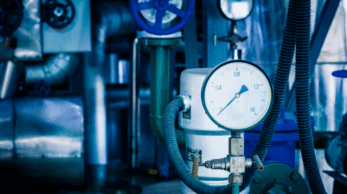With increasing challenges in water management, the maintenance of water and sanitation networks must be carefully structured. Ensuring water quality is impossible without a transparent, forward-thinking industrial maintenance strategy. This is especially critical given the rapid effects of climate change and growing population pressures. Optimizing existing infrastructure and leveraging tools such as CMMS (Computerized Maintenance Management Software) is essential to maintaining a reliable water supply.
A critical context for water and sanitation networks
Globally, water and sanitation networks face complex challenges. The water crisis is intensifying, marked by increasing shortages and the degradation of aging infrastructure.
In response, France has launched an ambitious water conservation plan, investing heavily in leak repairs and network improvements. Spain is prioritizing water reuse for agricultural irrigation, while Australia focuses on desalination and recycling to combat increasing aridification. These efforts reflect a global shift, with each country adopting strategies tailored to its specific challenges.
Despite their differences, these initiatives share a common goal: proactive water resource management. Sustainable access to water, supply security, and the protection of aquatic ecosystems depend on this approach. International forums, such as the United Nations climate conferences, have become key platforms for sharing experiences and strategies. A key takeaway from these discussions is the urgent need to modernize maintenance approaches to ensure a sustainable water supply despite rapidly changing conditions.
Regardless of location, the trend is clear: proactive maintenance and technological upgrades in water and sanitation infrastructure are essential. Data-driven maintenance, supported by specialized software, allows industry professionals to respond more effectively to emerging challenges.
Preventive maintenance to support the water and sanitation sector
Beyond water scarcity concerns, the sector faces major challenges related to public health. Water quality is directly linked to infrastructure condition and regular maintenance. Any leakage in the network increases the risk of contamination, a threat that industry professionals must systematically mitigate to protect local communities.
Regular inspections of pipelines and treatment facilities must follow strict procedures and schedules. Flawless maintenance is essential to identify risk areas and prevent failures. Water treatment and distribution operations require precise handling, addressing microbial contamination, corrosion, and scaling. The industry must implement critical treatments to maintain infrastructure without compromising water quality.
Maintenance activities must also comply with strict standards to ensure water potability and regulatory compliance. With new contaminants constantly emerging, quality requirements continue to evolve. For industry professionals, maintenance must be synonymous with adaptability and anticipation. Early anomaly detection is the backbone of effective maintenance in the water sector.
Maintenance as the cornerstone of water security
Preventive maintenance is the most effective strategy for keeping water infrastructure in optimal condition. A well-developed maintenance plan allows companies to:
- Adapt to constant structural and regulatory changes in their region
- Control costs and minimize the financial burden on consumers
- Implement solutions to reduce pollutants as early as possible
- Maintain operations despite disruptions (water supply interruptions, consumption restrictions, etc.)
- Ensure environmental compliance
- Navigate complex regulatory procedures
- Preserve asset value despite industry challenges
Preventive maintenance, supported by advanced diagnostic tools, is the most effective approach. Early analysis of equipment conditions helps identify and address issues before they become critical or anticipate unprecedented events. Regardless of external changes, proactive maintenance minimizes downtime and service disruptions while enabling swift adaptation to new requirements.
To ensure that maintenance operations remain compliant with industry standards and consistently deliver high-quality water, modern industrial maintenance integrates real-time monitoring technologies. Smart sensors, combined with data analytics systems, provide valuable insights into network conditions. This shift toward smarter maintenance significantly contributes to water resource conservation and operational cost reduction. The use of IoT (Internet of Things) technology aligns with digital maintenance tools, enhancing intervention team management and spare parts logistics for maximum efficiency.
Maintenance software: A game-changer for water industry professionals
Adopting a maintenance management system—such as CMMS software—is essential for water and sanitation industry professionals aiming for operational control. CMMS functionalities continuously optimize maintenance processes within water infrastructure. Field data transforms how teams manage facilities.
Streamlined operations planning
Maintenance software enables precise scheduling of preventive maintenance tasks. CMMS centralizes all technical data, from pumping stations to distribution networks and treatment plants. This consolidation facilitates tailored maintenance plans for each type of equipment, with automated reminders for mandatory periodic inspections.
Real-time equipment performance tracking
Real-time monitoring and data analysis help optimize resource allocation. Maintenance software provides dashboards rich with key performance indicators (KPIs), allowing site managers to track facility availability, maintenance costs per asset, and the effectiveness of preventive versus corrective interventions.
Data collection and predictive insights
Integrating IoT with maintenance software enables continuous water network monitoring. Critical parameters, such as pressure, flow rate, and water quality, are measured in real-time. Automated data collection allows for early anomaly detection, triggering alerts before failures occur.
This technological synergy is essential for improving agility in water infrastructure management. With CMMS, water industry sites—regardless of their specific operations—can align resource planning with regulatory compliance, ensuring consistent water quality. In a sector where reliability is paramount, advanced maintenance strategies will play a crucial role in securing water resources for future generations.






